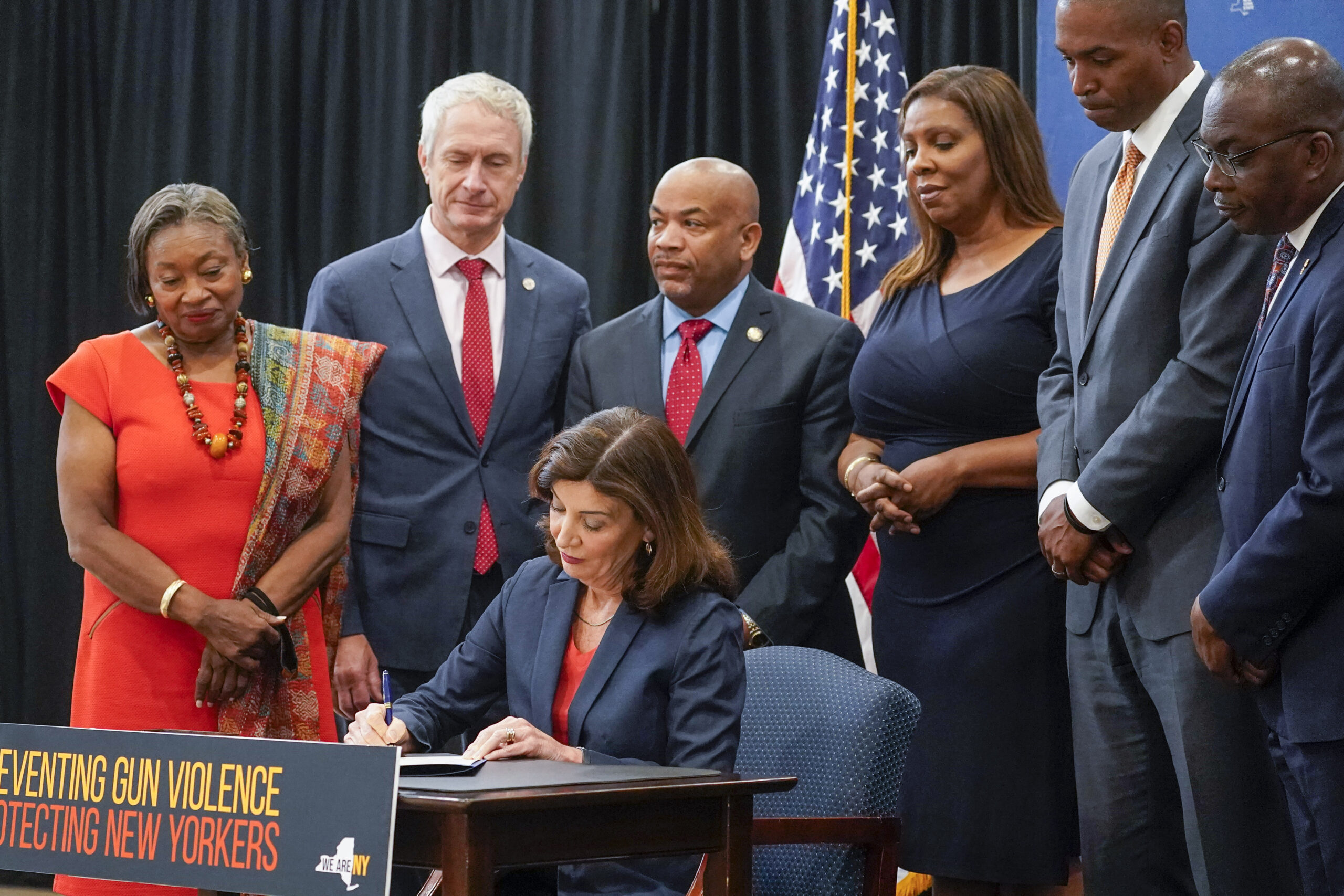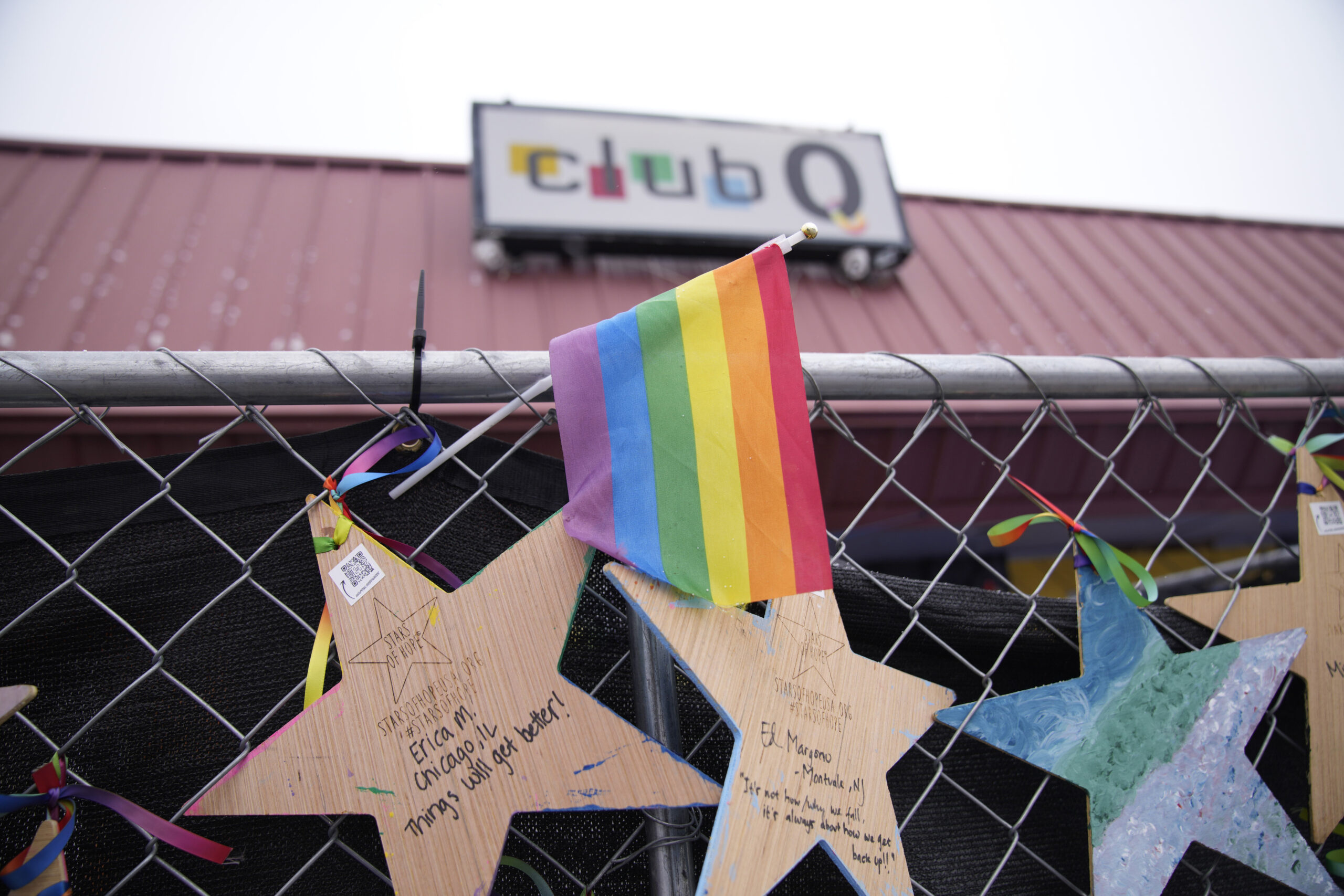In August 2023, police in Suffolk County, New York, received a 911 call. A person put a fake gun to their head, threatening suicide. “Wait until I get a real one,” they said. The responding officer quickly filed an Extreme Risk Protection Order application, which a judge granted soon after, temporarily barring the person from buying a gun. Just a few weeks later, the same person attempted to buy a real one. The order blocked the purchase.
“That just goes to show right there that even though you may not have a gun at the time, an ERPO being in place could potentially prevent that person from making a very bad decision at a very bad point in their life,” Suffolk County Chief Deputy Sheriff Christopher Brockmeyer told me.
Suffolk County spans from the outlying residential suburbs of New York City to the picturesque shorelines of the Hamptons. It’s sprawling, but not the most populous: Its more than 1.5 million residents are spread over 900 square miles. Yet in the five years since New York passed its risk order law, commonly referred to as a red flag law, judges there have granted Extreme Risk Protection Orders against more than 2,600 people — leading every New York county in ERPO use and accounting for nearly one-third of the state’s 8,500 orders. Next door to Suffolk, Nassau County, with a similar population, has issued fewer than 100. Erie County, home to Buffalo, ranks second in ERPO use, but even when adjusting for population, it’s nowhere near Suffolk’s numbers. Suffolk even outnumbers many states.
The county’s high use of ERPOs could serve as a model for other counties in New York, and, as these laws become more common, potentially for police agencies across the country. In 2023, two states passed new ERPO laws, bringing the total nationwide to 21. At the same time, there’s an influx of federal funding to improve implementation — which has been the major roadblock to increasing their use.
So how does Suffolk County approach this process?
First, some background on ERPOs: These orders are not automatic. Someone — usually police, but sometimes family members or medical professionals — has to file for one when faced with a person exhibiting a threat to themself or someone else. In New York, if a judge agrees that there’s evidence the person poses a danger, they then grant a temporary order, banning the person from having guns for up to six business days. And after a hearing, the judge can issue a final order, which can last for up to a year.
These laws’ reliance on local law enforcement and court systems — either to file or handle the cases — means that use varies widely, depending on awareness, procedures, and local leaders, according to Lisa Geller, a researcher at Johns Hopkins and senior adviser for ERPO implementation at its Center for Gun Violence Solutions. It can range from just a handful of orders in states like New Mexico and Hawaii, to hundreds in states like Colorado, to thousands in places like Florida and New York. At The Trace, we’ve covered these stark geographic variances before.
“Implementation of these laws varies drastically not just from state to state, but from county to county, from jurisdiction to jurisdiction,” Geller told me. “We can’t always say why that is.”
In Suffolk County, law enforcement officials attribute the success of the ERPO process to early adoption, comprehensive training, and close cooperation between the law enforcement agencies in the county. “If we have an incident that would make us need to file an application, there is a procedure to follow and that training has been done,” Brockmeyer said. “I think that training contributed to the exponential increase.”
The county police department is the most frequent filer, though state police, town police, and civilians also file applications. Civil court judges hear the cases, and the county Sheriff’s Office serves the orders, seizing any guns that may be in the respondent’s possession.
Patrol officers receive ERPO training in the police academy and at the precinct, along with ongoing training, according to Kate Wagner Fohrkolb, the assistant deputy police commissioner of the Suffolk County Police Department. The training includes how to assess and evaluate incidents to determine whether the officer should file for an order. And then there’s ongoing executive oversight, reviewing, and auditing internal processes, the deputy commissioner said.
If law enforcement officers encounter someone who is exhibiting threatening behavior that fits the requirements of the ERPO law, they’re not just allowed to file for an ERPO. They’re required to do so. For example, when someone is transported for an emergency mental health evaluation, that typically requires officers to file an ERPO in Suffolk County. County police have been following a similar policy since 2019, Fohrkolb said, a pilot that led the state and gave the county a head start in setting up policies, procedures, and training to handle the caseload.
“We already had a very strong infrastructure,” Fohrkolb told me. “So we were able to pivot to the change in the law, and meet the demand where in many other counties, there would be a different time to get it set up.”
In May 2022, after a mass shooting at a Tops supermarket in Buffalo killed 10 people, reporting showed that the state’s ERPO had been used infrequently. Governor Kathy Hochul signed a directive to state-level police to apply the law in mandated situations, and the following month, the state Legislature added the requirement for all police to state law.
It led to a surge in ERPOs, from 286 statewide in 2021 to 4,999 in 2023, 35 percent of which were in Suffolk County.
“We’ve continued to follow up after those early periods, to say, ‘Hey, how are things going? Where are we having roadblocks? What’s not working right? What are the bottlenecks?’” Brockmeyer said. “I really do feel — rather than just kind of winging it, and hoping it all works out — this had an effect.”
There have already been some stark examples of their impact. In 2022, the Sheriff’s Office seized three guns, 41 high-capacity magazines, 4,000 rounds of ammo, and a silencer while serving an order on a 26-year-old man. But most situations are not like that. In 2023, sheriff’s deputies seized 17 handguns and 71 long guns, which are generally rifles and shotguns. Police who file the applications also frequently take guns into custody — 159 in the case of Suffolk County Police — when responding to the emergency calls, adding to that total.
That might seem low in a year when judges ordered more than 1,700 ERPOs in Suffolk County, but even when guns aren’t present, the orders can be a preventative measure to keep unarmed people from becoming armed during a crisis.
“Sometimes these are situations where people don’t have firearms currently, but they could because they’re otherwise not prohibited from purchasing firearms,” Geller said. “Those could still be people at risk, particularly when we’re talking about suicide, delaying that purchase can really be the difference between life and death.”
Across dozens of ERPO cases in Suffolk County court records, the vast majority were for people who’d exhibited or threatened suicidal behavior, and most did not have a gun. ERPOs often receive public attention in the aftermath of a mass shooting as a tool to prevent future violence (and there are studies suggesting they do), but research indicates they may have the greatest lifesaving impact on firearm suicide rates. Brockmeyer concurred: “I think we can all agree that if you have anyone that you’re aware of who is facing that situation, the worst thing they can potentially do is have a firearm in their possession.”
One study, based on Connecticut’s ERPO law, found that for every 10 to 20 orders issued, one suicide was prevented. If Suffolk’s 2,600 orders follow that pattern, they may have stopped dozens of likely deaths.
“Red flag laws are a tool in the toolbox to identify early warning signs to hopefully be able to prevent a future act of violence,” Fohrkolb said. “And if you aggressively utilize this law, you are going to cast a wide net in the hopes of keeping people safe.”



